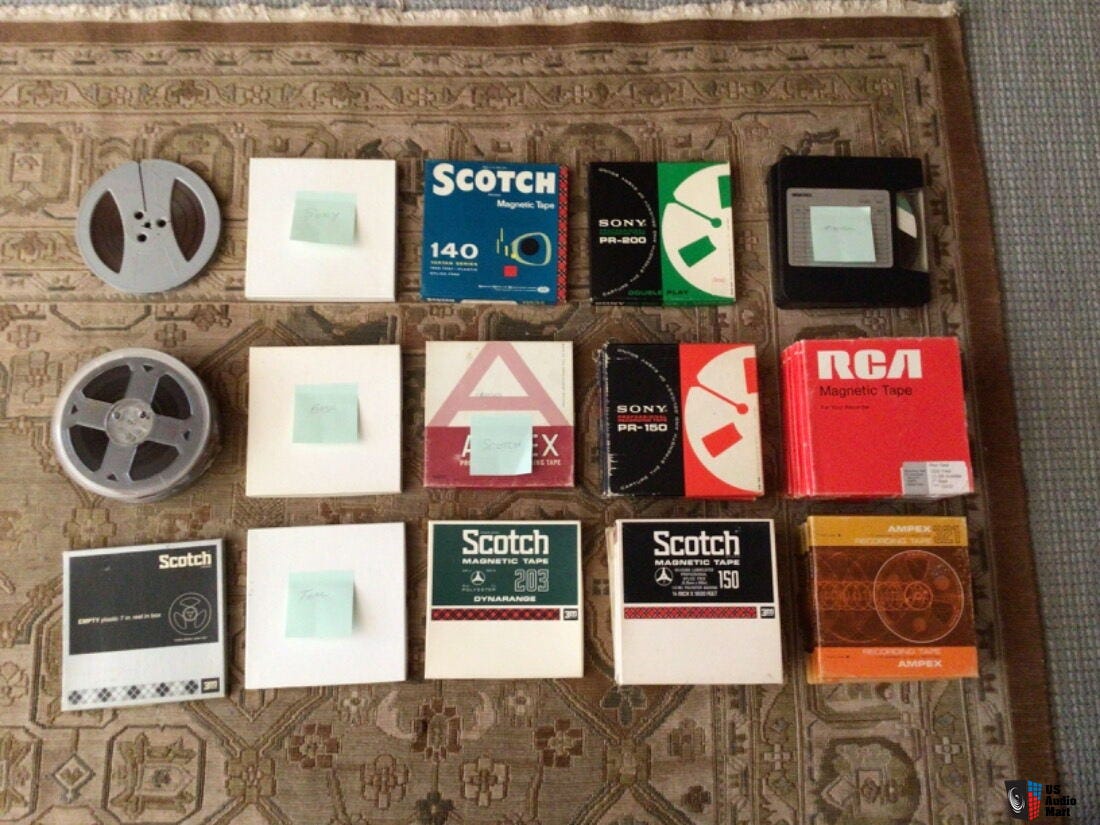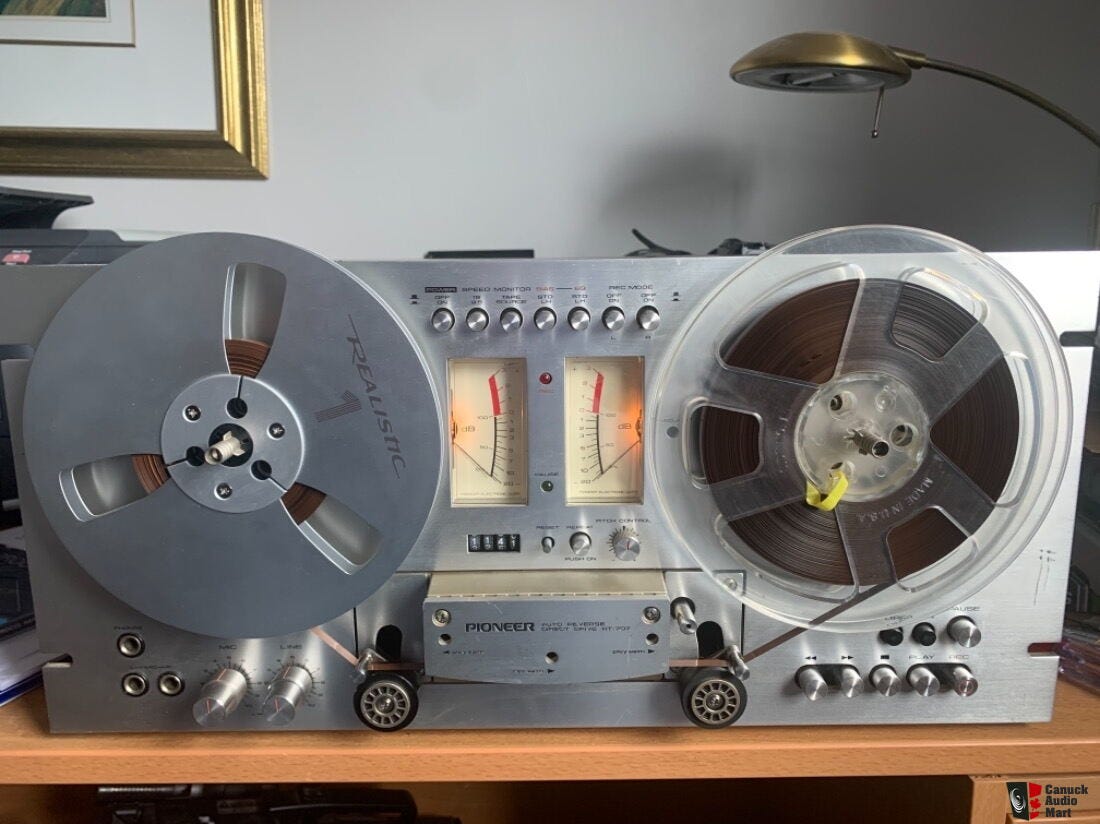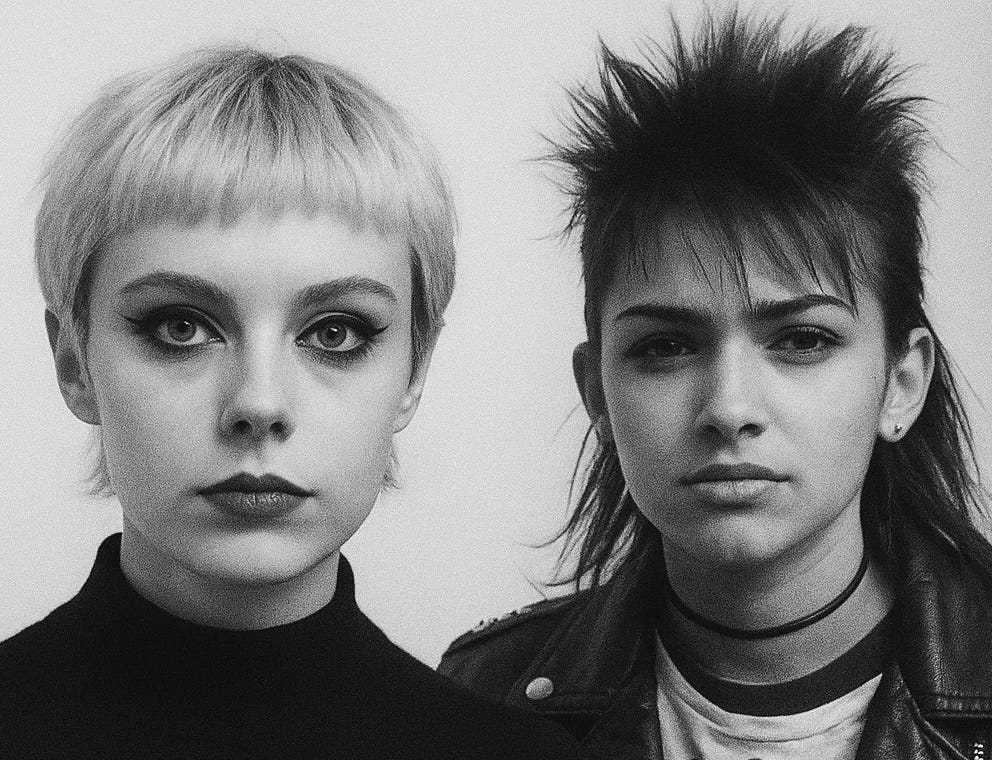So, now that we’ve combed through most of the confirmed, official texts I got from Billy over at Jenna’s old house (there’s a ton more but I am still panning it for gold), and we’ve talked about all the official facts of the cast and characters of the mysterious case of The Dreamenders Labyrinth and its cursed adaptation, The Realm, I’d like to have a little fun, in honor of the first actual release of Simone Jordan’s music after 47 years, in the form of a compilation by her New Wave band, Burnbridge Waters. See, I found the tapes among Jenna’s things, in a musty box in the only locked room—a closet behind a ton of Tupperware boxes.
I say the box was musty but only because the closet was—most things in it had an inch of dust and holes from moths or silverfish or what have you, completely neglected or at times unrecognizable. There was a Simon Says with just the red button in there, for Chrissake. But not this box. The tapes were old as the hills, yellowed from slow decay, but less dusty and all carefully put away. To hazard a guess, I’d say about 30 years of dust instead of 50. Of all of it this was clearly the most used, the most frequently taken out and gone through. I’d say they were still being taken out and held right up until Jenna went missing in ‘93. The same for a pristine Panasonic 707 on which they could be played, which had been under a dust cover.
The tapes featured a series of tracks by Burnbridge Waters from 1978-1982. While Burnbridge had been active in the New York scene that whole time, none of their work had ever been released or played on the radio (except maybe a college station or something I would have no way of finding out about). Out of a rather large amount, maybe 20 tracks worth of stems, there were maybe 12 or 13 usable ones. Once again, more may be forthcoming, but require assembly as well as mastering—a vocal track here, a drum track there. Matching them would take time. Only about 9 were properly labeled across all six parts: Simone’s vocals, synth, and guitar, the bass, drums, and sax.
I have some amateur audio production experience. I was able to clean them up (with the help of A.I. mastering tools, I’m not actually that good at this) and I’ve put it up on the various streaming services recently. We didn’t have the cash for anything better. Although I may be withdrawing them from Spotify and YouTube Music soon, because the large tech companies are basically part of a fascist Apocalypse cult that Simone would’ve never aligned her music with, he realized while typing this.
So here’s the Bandcamp embed, which I think she would’ve approved:
And yet the question still emerges…
“What?”
At no point in my research was there so much as a deleted scene featuring Simone Jordan and Jenna Orenda. I had her personal journal, her correspondence with family and friends, I talked to most of the survivors, and nothing had come up once. Yet looking at these, it suddenly occurred to me how strange that was.
WARNING: The following is pure speculation, which is why it was not included in the earlier sections where eyewitness testimony and primary sources could be used to verify and backup things. This is the precise opposite of verifiable: it is a negative space in the research with tiny indications found only upon a second glance, after noticing said plot hole. Reality rarely lines up like this, yet I am forced to point out—
Here was a punk rock feminist, the human embodiment of the Indigenous Critique, adapting her own progressive, anti-Imperialist novel into a film, coated head-to-toe in queer code. Here was a new wave punk rocker, feminist, anti-fascist, defiantly lesbian woman fighting gentrification in New York, hired to author the score prior to filming, who then had nothing to work with but Jenna’s draft specifically. And I had no evidence they ever spoke, let alone met—yet both would have been on set at least in Los Angeles, if not Peru. Simone never spoke about her on set visits. I only knew Jenna to have befriended her former lead actress turned damsel, Heather Dunne1.
It wasn’t just weird that they hadn’t seemed to have met or spoken, it was weird they hadn’t been friends. Why weren’t they best friends? Why wasn’t this entire story really the epic story of their love against all odds?
And then, I think, it was 1980. While a Brooklyn punk rocker who had a scene to mingle with of Studio 54 gays, drag queens, hip hop artists, punks, performance artists, gutter clowns, and Broadway queens may have been capable of writing, performing, even recording songs that can best be described as “unpublishable” at the time2 , a minority girl from the South might not have the privilege of such freedoms of thought or expression, no matter how rebellious and seemingly sexually open.
Then, I thought about something. I called Marion. I asked him if he ever remembered a blonde hanging around with Jenna after the movie went belly-up. He sent me this:
Son of a bitch. They look like they’re posing for a fucking LP insert. Did they start a band and not tell anyone? What was actually the fuck? Marion said he only saw Simone once (though her name being Simone seemed news to him), but it had made him extremely sad because they already had seemed like best friends. He had no idea what this picture was from, but he agreed with me as a collector of music that it looked professionally taken, and that it looked creatively motivated. That’s when he had his little revelation about the nature of his friendship3, and had decided to give Jenna space.
And my final clue is the weakest, admittedly, but the latest recording date on one of the tapes was September 14, 1982. That’s a month or so before Simone’s death, 4 months after the Ziggurat, and a year since she had completed her original score, almost 2 years since she had started to work on it, 3 years after any other Burnbridge recording. Plenty of time to call up the writer to ask her questions about the emotional content of that first draft—remember that as described, Jenna’s original work was life alteringly gorgeous and seemed to give each person a different takeaway—in order to better compose without any footage to work from; to hit it off with a kindred spirit; to meet in person on the set and find out both of them were pretty damn attractive; and to be attached at the hip without being noticed by a single cast or crew member, because the screenwriter and composer are the least noticed artists on a film set. Add to that the instinctive private nature of gay women that weren’t exactly in the disco scene, and perhaps the respect of said privacy by the artists of the film, and you have a perfectly reasonable explanation for why there is no record of them interacting in the least apart from a single photo that seems inordinately collaborative. And then add the devastation that might ensue when Jenna, the freest person Simone had ever met, would be just repressed enough to never act on anything, or worse—turn out to be straight. But, of course, the latter seems unlikely, since Jenna still had those tapes, had been left them from the fire, and took them out and listened to them regularly.
Of course, all of this is just speculation on my part, and not real journalism. But as a hopeless romantic, I can’t help thinking there is more to this photo, and the very idea of these two meeting is enough to send my lonely heart reeling. Oh, and the song on that tape? A little diddy called, “To Jane, Whoever You Are.”
…I’m just saying.
Check out the direct mentions of Kissinger and allusions to “nixing” Nixon in “Shadows on the Wall”; the overt queerness of “Freshwomen”, “My Boyfriend’s Girlfriend”, and “Queens Expressway”. When your most radio-friendly fare is an ode to the Viet Cong [“To Charlie (With Love & Squalor”)] and the theme song to an unreleased B-Movie called Apocalypse High, wherein group of teenagers after a nuclear war fight off fascist robot teachers… If you want to know just how unpublishable this was in 1979, remember that The Killers’ “Somebody Told Me", a relatively tame nod to bisexuality, was still controversial by 2004, and that The Smiths are still not played on the radio.
See To Be Enough





